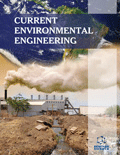Abstract
Background: The change in land use has increased flood risk in Tunisia.
Objective: This paper evaluates the impact of such changes on the Mellegue River basin in Tunisia.
Method: The semi-distributed (Hydrologiska Byråns Vattenbalansavdelning) HBV-Light hydrological model and remote sensing for two different periods were used in the evaluation. ArcGIS software was used to generate land use/cover maps. The accuracy of the classified maps was assessed using contingency matrix.
Result: The results show that the forest area decreased by 5% from 1988 to 2003 due to anthropogenic activities. As well, the irrigated land increased by 4% due to development of advanced agricultural techniques and governmental support to increase agricultural yield. Model calibration and validation using GAP optimization for land use in 1988 and 2003 gave an efficiency of 0.38 and 0.33, respectively. The validation results slightly decreased compared to the calibration step.
Conclusion: The paper showed that deforestation was the main factor of increasing the runoff from 1988 to 2003.
Keywords: Flood, HBV-Light, ArcGIS, remote sensing, hydrological response, soil erosion.
Graphical Abstract
 11
11 2
2 1
1 1
1

